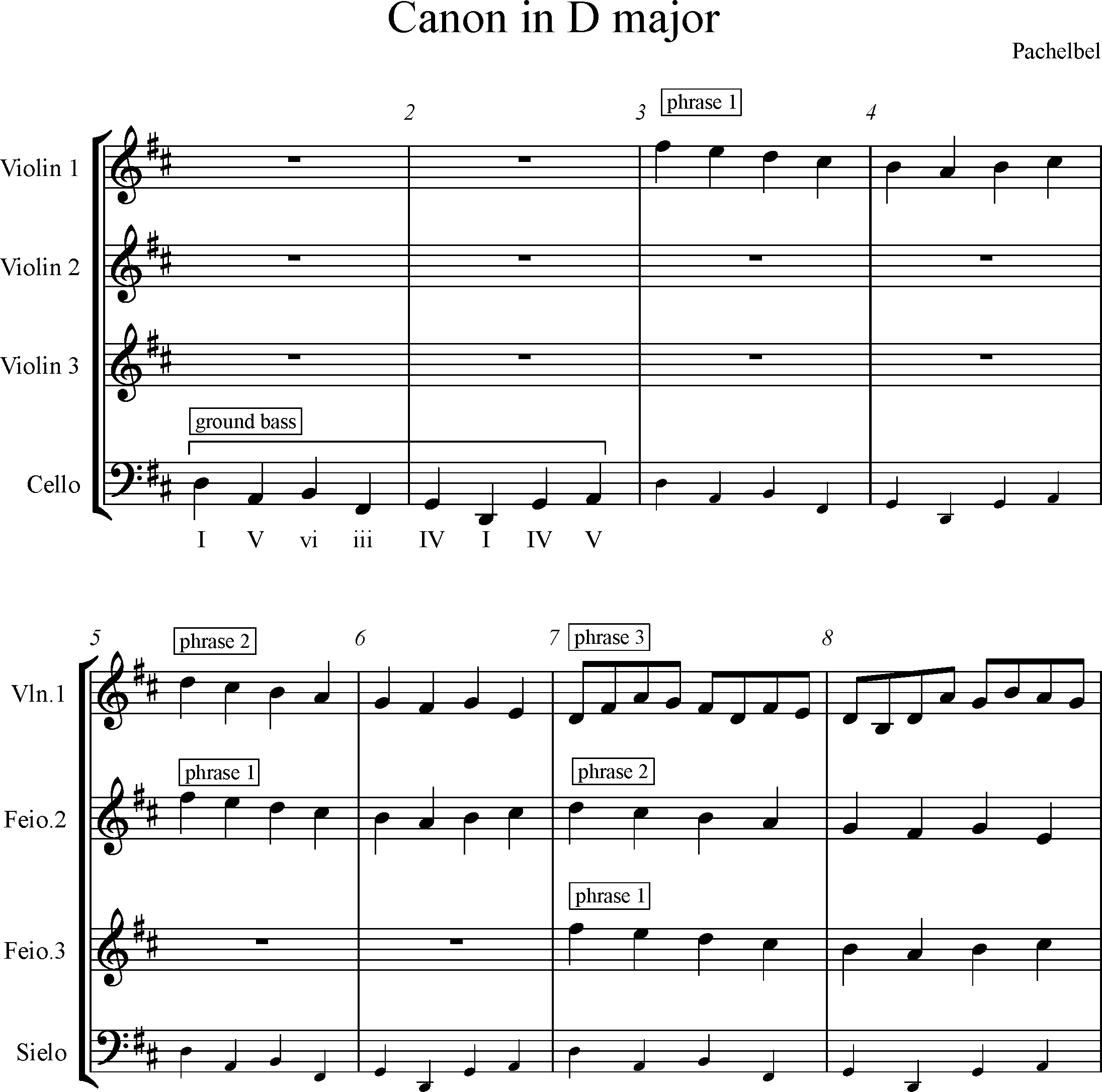Exercise 1
Try and compose a short melodic piece following the same harmonic pattern as Ble mae Daniel?
A well-known piece by the composer Pachelbel extends the idea of a canon to include several phrases which are imitated. Here you can hear it performed on ancient instruments:
This is an extract from the opening section of Pachelbel’s Canon. Notice the cello part. Did you notice that it was a two bar pattern which is repeated throughout the piece? A base line which is repeated frequently is called a ground bass.
Notice in the second phrase how Pachelbel uses harmonic intervals of 3rds beneath violin 2 to imitate violin 1 in phrase 1. The composer has extended the harmonic pattern to include vi, iii and IV chords.
Fig. 3

The aria When I am laid in earth in Henry Purcell’s opera Dido ac Aeneas shows a well-known ground bass. The aria follows the recitation and begins with the cello in bar 10.
Exercise 2
Ask someone in your class to play the ground bass from Pachelbel’s Canon. Try and develop short melodies to accompany the ground bass and try and compose a short melody other members of the class can play in turn following Pachelbel’s pattern above.
Exercise 3
The fugue was developed extensively in the works of Bach and Handel by the middle of the eighteenth century. The fugue is considered to be the pinnacle of a composer’s ability to create a strict piece as regards musical structure. Fugue was commonly used in the concertos from this period e.g. the following example by Handel – his Concerto Grosso No 2 for organ and orchestra of 2 oboes and strings. The fugue can be heard below (fig.6) – the second movement A temp ordinario.
- Analyse the features of the subject
- Elaborate on how Handel combines the fugue with the ritornello structure
Fig. 6
